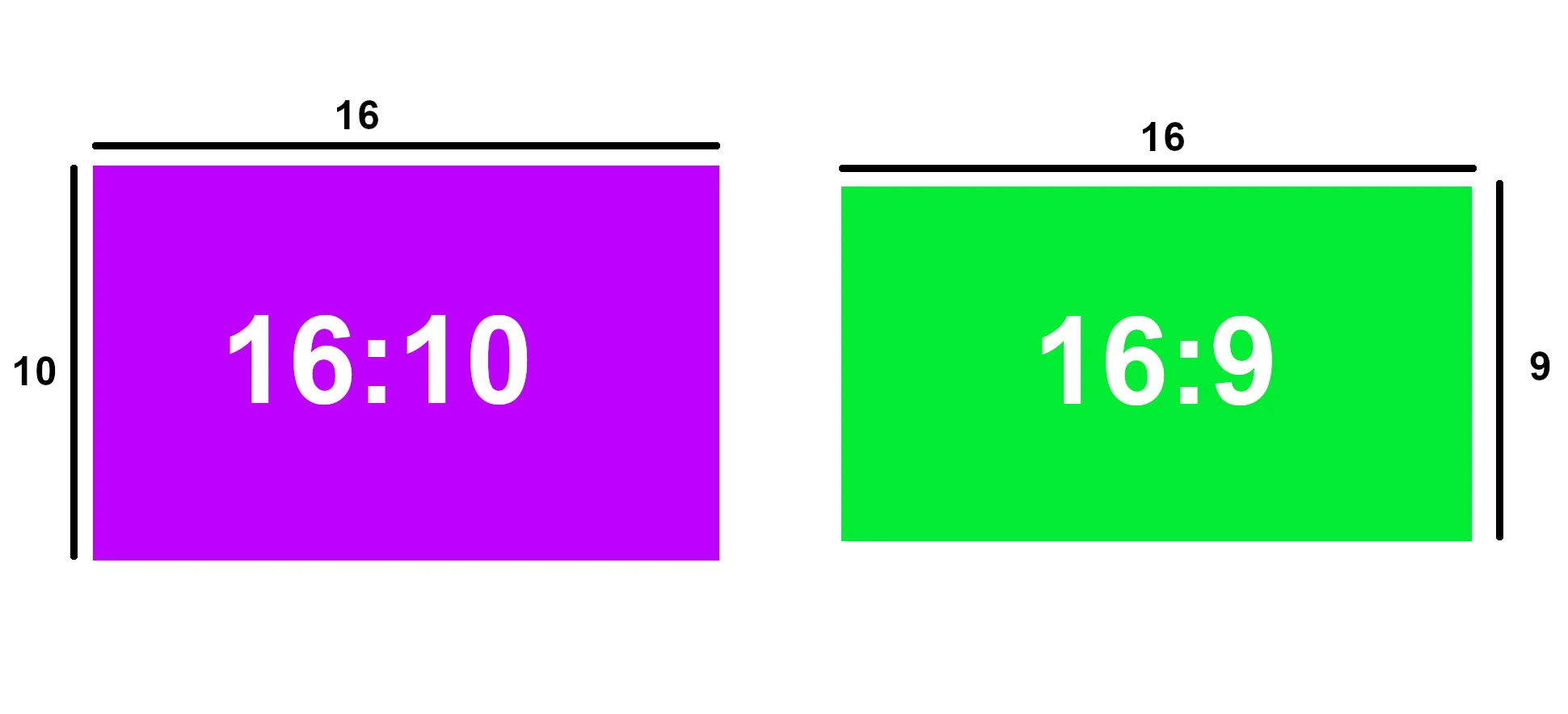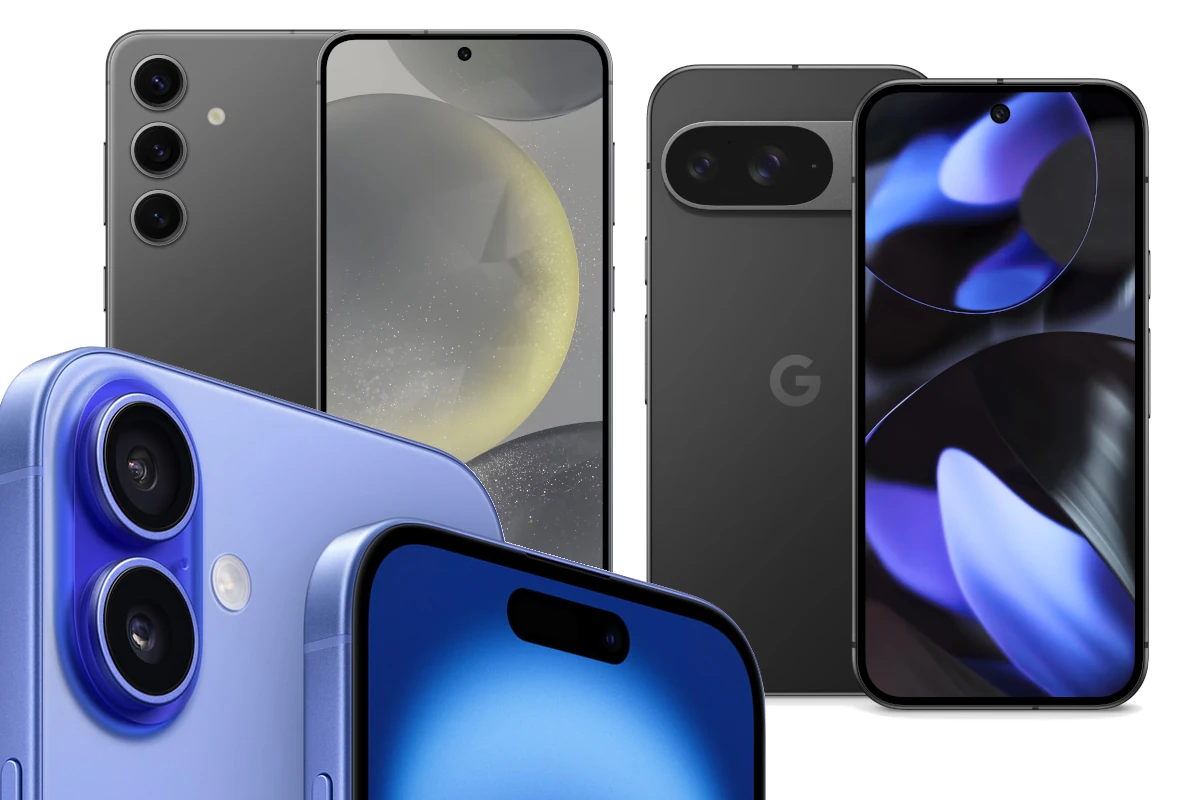Phone aspect ratios play a big role in how we use our smartphones. They affect how we watch videos, play games, and view content. Two critical factors that significantly influence the screen experience are aspect ratio and resolution. The aspect ratio is the width to height ratio of a phone’s screen and it dictates the shape of the screen, impacting how content is displayed and how comfortable the phone feels in your hand. Resolution determines the clarity and sharpness of images and videos. Understanding these factors can help you make informed decisions when choosing a new smartphone or optimizing content for different devices. This article provides a comprehensive guide to phone aspect ratios and screen resolutions, explaining what they are, why they matter, and how to find this information for your own device.
Common phone aspect ratios include 16:9, 18:9, and 19:9. The first number is the width and the second is the height. A wider ratio like 19:9 gives more screen space for videos and games. A shorter ratio like 16:9 is better for one-handed use.
Picking the right aspect ratio depends on how you use your phone. If you watch lots of videos, a wider screen may be best. For texting and calls, a shorter screen works well. Think about what matters most to you when choosing a new phone.
Aspect Ratios for Modern Phones
| Phone Model | Screen Resolution | Aspect Ratio |
|---|---|---|
| iPhone 16 | 2556 x 1179 | 21:9 |
| iPhone 16 Plus | 2688 x 1242 | 21:9 |
| iPhone 16 Pro | 2868 x 1320 | 21:9 |
| iPhone 16 Pro Max | 2868 x 1320 | 21:9 |
| Pixel 9 | 2424 x 1080 | 21:9 |
| Pixel 9 Pro | 3120 x 1440 | 21:9 |
| Pixel 9 Pro XL | 3120 x 1440 | 21:9 |
| Samsung Galaxy S24 | 2340 x 1080 | 20:9 |
| Samsung Galaxy S24+ | 3120 x 1440 | 20:9 |
| Samsung Galaxy S24 Ultra | 3120 x 1440 | 20:9 |
| Samsung Galaxy S24 FE | 2340 x 1080 | 20:9 |

Important Notes:
- Aspect ratios are simplified, as the exact ratio may have a decimal.
- “Resolution” is the number of pixels, impacting sharpness.
- Higher resolution doesn’t always mean a better screen, as pixel density (pixels per inch) also matters.
- This table focuses on the main flagship models of each series. There might be minor variations within each series (e.g., different sizes of the same base model).
Understanding Phone Aspect Ratios and Screen Resolutions
What is Aspect Ratio?
Aspect ratio is the proportional relationship between the width and height of a screen. It is expressed as two numbers separated by a colon, such as 16:9. This means that for every 16 units of width, there are 9 units of height.
Common Aspect Ratios in Smartphones:
- 16:9: This was the standard aspect ratio for many years. It’s great for viewing widescreen content but can feel a bit cramped for browsing the web or reading text.
- 18:9: This taller aspect ratio provides more vertical space, making it better for scrolling through social media or reading articles.
- 20:9, 21:9, and beyond: These even taller and narrower aspect ratios are becoming increasingly common. They offer a more immersive experience for watching videos and playing games.
What is Screen Resolution?
Screen resolution refers to the number of pixels that a screen can display. It is usually expressed as width x height, such as 1080 x 1920. A higher resolution means more pixels, resulting in a sharper and more detailed image.
Common Screen Resolutions in Smartphones:
- HD (720p): 1280 x 720 pixels
- Full HD (1080p): 1920 x 1080 pixels
- Quad HD (1440p): 2560 x 1440 pixels
- 4K: 3840 x 2160 pixels
How Aspect Ratio and Resolution Work Together
Aspect ratio and screen resolution work together to determine the overall quality of the display. A phone with a high resolution but a low aspect ratio may still feel cramped, while a phone with a high aspect ratio but a low resolution may look pixelated.
Why Aspect Ratio and Resolution Matter
The aspect ratio and resolution of your phone’s screen can significantly impact your user experience. A taller aspect ratio can make it easier to multitask and view more content at once. A higher resolution can make images and videos look sharper and more detailed. When choosing a new phone, it’s important to consider both factors to find the best fit for your needs.
Finding the Aspect Ratio and Resolution of Your Phone
| Method | Description |
|---|---|
| Check your phone’s settings | Go to Settings -> About Phone -> Display. You should find information about your phone’s aspect ratio and resolution here. |
| Use a third-party app | There are many apps available on the App Store and Google Play that can provide detailed information about your phone’s hardware, including the screen aspect ratio and resolution. |
| Search online | If you know the make and model of your phone, you can search for its specifications online. Websites like GSMArena.com and PhoneArena.com provide detailed information about almost every smartphone on the market. |
| Measure the screen | If all else fails, you can measure the width and height of your phone’s screen with a ruler. Divide the width by the height to calculate the aspect ratio. Note that this method will give you an approximate aspect ratio, as the actual aspect ratio may be slightly different due to rounded corners or other design elements. |
Key Takeaways
- Phone aspect ratios affect how content is displayed on the screen
- Wider ratios offer more space for videos and games
- The best ratio depends on your main phone activities
Understanding Aspect Ratios in Mobile Devices
Phone screens come in different shapes. The length and width of a screen affect how we use our phones. Let’s look at how these shapes have changed and why they matter.
Evolution of Aspect Ratios in Smartphones
In the early days, most phones had 16:9 screens. This means for every 16 units wide, the screen was 9 units tall. It worked well for watching videos and using apps.
As time passed, phone makers tried new shapes. The Samsung Galaxy S8 and LG G6 brought in taller screens. These had 18:9 or even 18.5:9 ratios. The extra height let users see more content without making phones too wide to hold.
Now, many phones use 19:9 or similar ratios. This change lets designers add features like notches or punch-holes for cameras at the top of the screen.
Impact of Aspect Ratio on User Experience
The shape of a phone screen changes how we use it. Taller screens make it easier to read long web pages or social media feeds. Users can see more text without scrolling as much.
For games and videos, wider screens can show more of the action. But some older videos might not fit perfectly, leaving black bars on the sides.
Typing can be more comfortable on wider screens. The keys are bigger and easier to tap. But very tall, narrow screens might make it hard to reach the top with one hand.
App makers have to think about different screen shapes too. They need to make sure their apps look good on all kinds of phones.
Screen Resolution and Display Quality
Phone screens come in various resolutions and quality levels. These factors impact how sharp and clear images and text appear on your device.
From HD to QHD and Beyond
HD (720p) screens have 1280×720 pixels. Full HD (1080p) bumps this up to 1920×1080 pixels. QHD screens offer even sharper images with 2560×1440 pixels. Some high-end phones now feature 4K (3840×2160) displays.
Higher resolutions mean more pixels packed into the same space. This results in crisper, more detailed visuals. But there’s a tradeoff – higher resolutions use more power and processing resources.
Many phones now use “plus” versions like FHD+ or QHD+. These add extra pixels to fit taller screens while keeping the same pixel density.
Understanding Pixels and Screen Resolutions
Pixels are tiny dots that make up images on screens. More pixels equal sharper pictures. Screen resolution tells you how many pixels are on the display.
For example, a 1080p screen has 1080 rows of pixels from top to bottom. The “p” stands for progressive scan, meaning the screen refreshes all rows at once.
Pixel density matters too. It’s measured in pixels per inch (PPI). A small 1080p screen will look sharper than a large 1080p screen. That’s because the pixels are packed closer together on the smaller display.
When shopping for phones, look at both resolution and screen size. This will give you a better idea of picture quality than just resolution alone.
Technical Specifications and Performance
Phone aspect ratios affect how devices handle technical specs and performance. Key factors include memory, processing power, and battery life.
The Role of RAM and Storage in Multitasking
RAM helps phones run multiple apps at once. More RAM means smoother multitasking. 4GB is good for basic use, while 8GB or more suits power users. Storage space affects app and file storage.
128GB is common, but some phones offer 256GB or 512GB. This extra space is great for lots of photos, videos, and apps. Phones with more storage tend to perform better over time.
Some phones let users add more storage with SD cards. This can be cheaper than buying a phone with more built-in storage.
Importance of Processor and Battery Efficiency
A phone’s processor is its brain. Faster processors make apps open quicker and run smoother. They also help with tasks like gaming and video editing.
Battery life is crucial for all-day use. Bigger batteries last longer, but efficiency matters too. New processors use less power, helping batteries last longer.
Screen size and aspect ratio affect battery life. Wider screens (like 20:9) might use more power than 16:9 screens. But they can show more content, which can be useful for work or entertainment.







